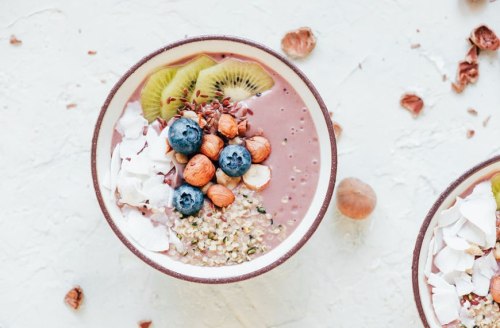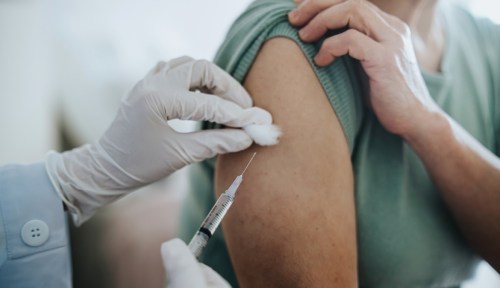How to use “seed cycling” to balance your hormones and improve your periods
Want to balance your hormones through your diet the natural way? Seed cycling might be the solution. Here's why blogger Lee Tilghman of Lee from America swears by it to boost estrogen and progesterone during different phases of her menstrual cycle.

On a scale of one to woo-woo, seed cycling might seem off the charts. The concept is pretty simple, though: Eat different types of seeds that either naturally boost estrogen or progesterone throughout the four phases of your menstrual cycle to balance your hormones and help lessen PMS symptoms. But does the method actually work? Even though there’s not much scientific research to back it up (except when it comes to flaxseed in particular), one wellness blogger credits the technique to helping her get her body back on track.
Healthy-living guru Lee Tilghman of Lee from America recently shared her thoughts on the wonders of seed cycling—something she herself thought sounded a little crazy at first. But once she finally gave it a try, she saw some promising results. “Though I used to struggle with regular periods during my PCOS days, I have a pretty normal cycle now—it varies from 28 to 34 days—and ovulate regularly,” she writes in a blog post. And while she admits she still gets some cramps during her period, seed cycling has certainly played a role in lessening the pain.
To give the method a try, simply rotate your seed collection throughout your cycle. “Seed cycling is a great way to start seeing the power of food and its effect on your shifting hormones throughout the month,” says women’s hormone expert Alisa Vitti, Well+Good Council member and creator of FLOLiving.
“Though I used to struggle with regular periods during my PCOS days, I have a pretty normal cycle now—it varies from 28 to 34 days—and ovulate regularly.” —Lee Tilghman on the benefits of seed cycling
During days 1 to 14, or until ovulation—the follicular phase—have 1 Tbsp each of flaxseed and pumpkin seeds daily: “Flax has lignans that bind to excess estrogen and pumpkin is high in zinc, which helps boost progesterone production,” Vitti says. Then during days 15 to 28—the luteal phase—have 1 Tbsp each of sesame seeds and sunflower seeds daily: “Sesame seeds also contain lignans to bind to excess estrogen, and sunflower seeds are rich in selenium to support the liver.” Just be sure to track your cycle to know what to eat when since not everyone’s cycle is 28 days, and not everyone ovulates exactly on day 14, explains Vitti.
Tilghman suggests storing the raw, unsalted, and whole seeds, in glass jars in your fridge to keep ’em fresh. And while most varieties are fine as is for digestion, she finely grinds flax so it navigates her system more easily (the Mayo Clinic backs her up, noting that doing this helps to better absorb all the benefits, like omega-3s and fiber). You can also toast your seeds or eat them in butter-form. Really, it just comes down to your preference and what you’re feeling like on a particular day.
Aside from a seed schedule playing a role in her hormones, there’s another perk to the process: It helps Tilghman stay inspired with her meals and gets her out of food ruts. “If I’m feeling unsure of what to eat for lunch, solely glancing at the seed cycling poster on my fridge gives me instant ideas for what I want to eat,” Tilghman says. So whether you want to give it a shot for the period-related benefits or simply for amping up your meal-prep game, the process might just be worth a try.
These are the hormones every active woman needs to know about. Or, find out if hormones are the reason you’re feeling so bloated.
Sign Up for Our Daily Newsletter
Get all the latest in wellness, trends, food, fitness, beauty, and more delivered right to your inbox.
Got it, you've been added to our email list.










